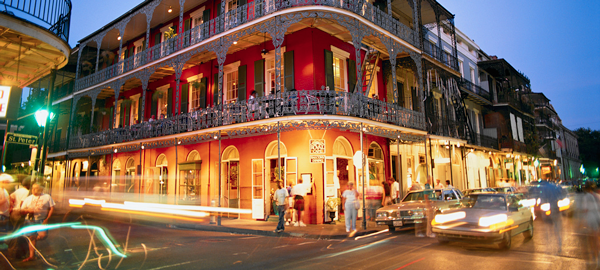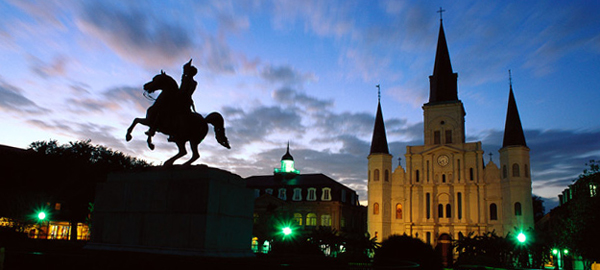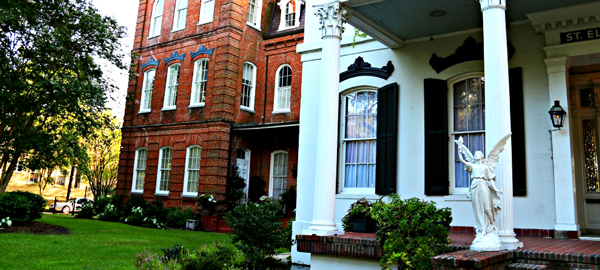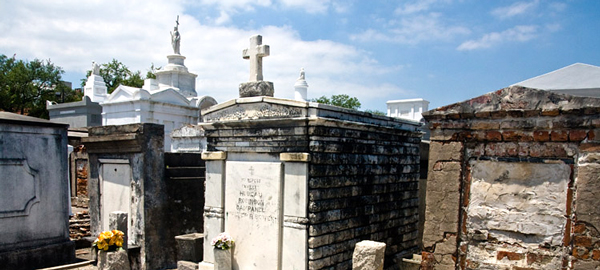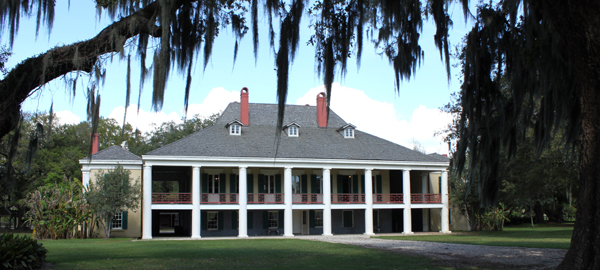[dcs_blockquote author=”The Vampire Lestat (1985)” framed=”true”]
From my stone pillow I have dreamed dreams of the mortal world above. I have heard its voices, its new music, as lullabies as I lie in my grave. I have envisioned its fantastical discoveries. I have known its courage in the timeless sanctum of my thoughts. And though it shuts me out with its dazzling forms, I long for one with the strength to roam it fearlessly, to ride the Devil’s Road through its heart.[/dcs_blockquote]
[dcs_darkspliter size=”large” bottom=”20″]In the canon of vampire literature, from classic to modern, Anne Rice’s The Vampire Chronicles holds a very significant place. Beginning with the publication of Interview with the Vampire in the spring of 1976, and ending with the controversial Blood Canticle in fall of 2003, the series spans a total of twelve novels (including those categorized under “New Tales of the Vampires”), countless cities, and over six thousand years.
Of these cities, one of the most remembered and beloved within the Chronicles is the city of New Orleans. Said to belong to Lestat himself, ‘The City That Care Forgot’ is where the main thrust of Interview with the Vampire takes place. Following this, we would find ourselves back in New Orleans, again and again, from The Vampire Lestat to The Tale of the Body Thief to Memnoch the Devil to Merrick to Blackwood Farm to Blood Canticle, inextricably linked to its energy and allure, its singularity and richness of culture and history, much like Lestat.
In the first installation of our travel guide, focused on New Orleans, we’ll show you places that were mentioned in the books, along with a few approximate facsimiles; locations rich with their own unique history, running alongside the Chronicles. We’ll take you down the proverbial Devil’s Road in a way we hope will bring you closer to the essence of the stories themselves, and the spirit through which they’ve become so deeply iconic.
And when you visit New Orleans, which you should, you’ll know exactly where to go.
[dcs_darkspliter size=”large” bottom=”20″]
Jackson Square and St. Louis Cathedral
[dcs_blockquote author=”Interview with the Vampire (1976)” framed=”true”]
I found myself at the cathedral: What does it mean to die when you can live until the end of the world?[/dcs_blockquote]
Nestled in the heart of the historic French Quarter, Jackson Square and the St. Louis Cathedral have seen their share of vampires. Mentioned in Interview with the Vampire, it serves as the backdrop for Louis and Claudia’s conversation on how to deal with Lestat. Later, in interior of the cathedral itself, Louis has a deadly encounter with a priest. It’s also featured in The Tale of the Body Thief, as Lestat lights a candle in the St. Louis Cathedral and contemplates the offer of Raglan James, the body thief himself, and meets him in front of it the following night.
[dcs_blockquote author=”The Tale of the Body Thief (1992)” framed=”true”]
The St. Louis Cathedral had been locked all night, but these locks were nothing to me. [/dcs_blockquote]
[dcs_darkspliter size=”large” bottom=”20″]St. Elizabeth’s
[dcs_blockquote author=”Memnoch the Devil (1995)” framed=”true”]
The orphanage was cold. Its thick brick walls, bare of all insulation, held the cold, and made it colder within than the winter outside.[/dcs_blockquote]
A renovated orphanage formerly owned by Anne Rice, the description of St. Elizabeth’s can be found on her official website:
“St. Elizabeth’s was built as a boarding school in 1865 and later turned into an orphanage for girls in 1870. The Daughter’s of Charity closed the school in 1989 and moved the program to Marrero, where they already operated a similar program for boys. The place was put on the market and almost became upscale apartments and senior citizen housing before Anne bought it in 1993. St. Elizabeth’s is an immense three-story brick edifice of 55,000 square feet. The three buildings that comprise St. Elizabeth’s are the largest cluster of Second Empire design architecture in the city of New Orleans and are on the National Register of Historic Places.”
Following Lestat’s reality-shattering journey through heaven and hell with the devil himself, he was involuntary chained in the basement of St. Elizabeth’s (said in the story to be owned by the vampires), in order to prevent him from harming himself or others. Today, visitors are no longer given tours of the building because it has been developed into private condominiums, but visiting the facade of the building itself, and seeing the sentinel-like angels flanking either side of the entry stairway, is well worth the time.
[dcs_darkspliter size=”large” bottom=”20″]St. Louis Cemetery #1 and #2
[dcs_blockquote author=”Interview with the Vampire (1976)” framed=”true”]
Of course, I did not escape my brother for a moment. I could think of nothing but his body rotting in the ground. He was buried in the St. Louis cemetery in New Orleans, and I did everything to avoid passing those gates; but still I thought of him constantly.[/dcs_blockquote]
Mentioned first in Interview with the Vampire, the St. Louis Cemetery is where Louis’ late brother is buried. Opening its gates in 1789, St. Louis Cemetery #1 became New Orleans’ main burial ground, replacing the no longer existing St. Peter Cemetery. Only one block from the French Quarter, St. Louis #1 welcomes tourists daily, and is even said to be the final resting place of the legendary Voodoo priestess Marie Laveau. St. Louis #2 (consecrated in 1823) is located approximately three blocks from St. Louis #1, and St. Louis #3 (consecrated in 1854) is located over two miles away from the French Quarter. For the purpose of The Vampire Chronicles tour, we recommend a visit to St. Louis #1 and #2.
[dcs_blockquote author=”Interview with the Vampire (1976)” framed=”true”]
They whitewash the plaster walls of the vaults, clean the names cut into the marble slabs. And finally they deck the tombs with flowers. In the St. Louis Cemetery, which was very near our house, in which all the great Louisiana families were buried, in which my own brother was buried, there were even little iron benches set before the graves where the families might sit to receive the other families who had come to the cemetery for the same purpose.[/dcs_blockquote]
[dcs_darkspliter size=”large” bottom=”20″]Destrehan Plantation (Robin de Logny)
[dcs_blockquote author=”Interview with the Vampire (1976)” framed=”true”]
I was talking about the plantations. They had a great deal to do with it, really, my becoming a vampire. But I’ll come to that. Our life there was both luxurious and primitive. And we ourselves found it extremely attractive.[/dcs_blockquote]
Beginning construction in 1787 and ending in 1790, Destrehan Plantation (an antebellum Greek Revival house built by Robin de Logny and passed down through his in-laws) remains one of the oldest homes in Louisiana today. For many years, readers of Interview with the Vampire pictured Destrehan as something nearly exact to what Louis described of his ancestral home, and plantation life. When Neil Jordan’s big screen adaptation of the book was released in 1994, long years of speculation was confirmed to be right. Destrehan was the plantation used for that exact purpose, in both interior and exterior shots of Louis’ home (in addition to Oak Alley Plantation). Visitors are welcomed, and Destrehan hosts guided tours of the property seven days a week. For more information visit their official website.
[dcs_darkspliter size=”large” bottom=”20″]Have you visited any of these locations? Have you always wanted to go? Let us know in the comment section below. And stay tuned as the Source continues to take you along The Devil’s Road through New Orleans, and beyond.
[dcs_emptyspace][dcs_emptyspace] [Photo Source: Corbis Images]

